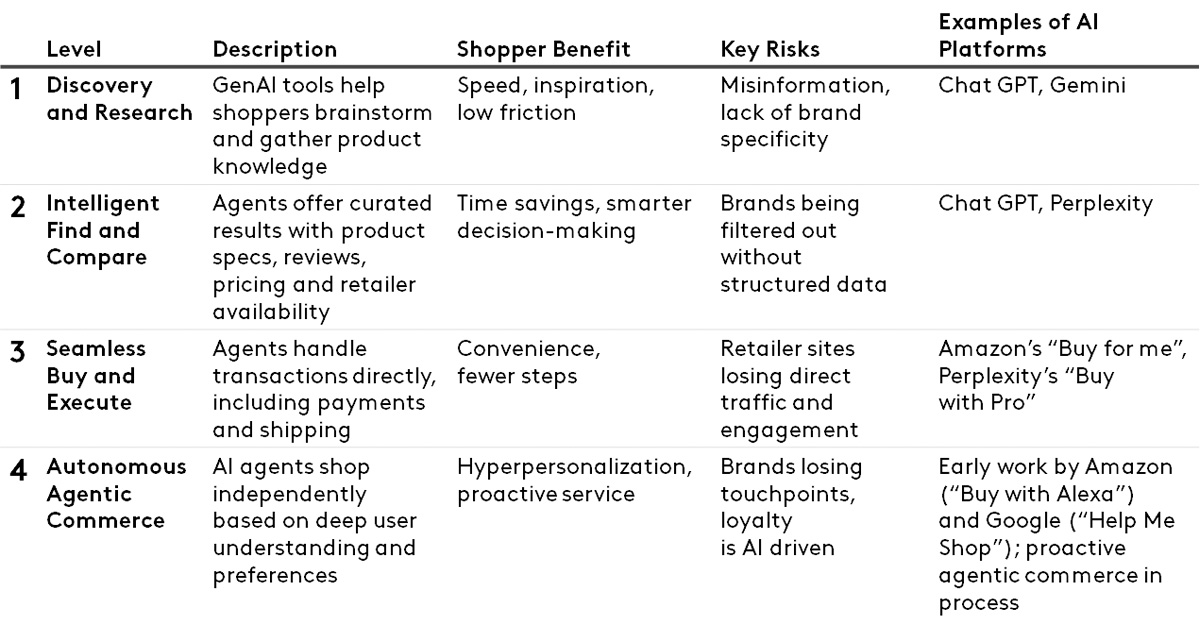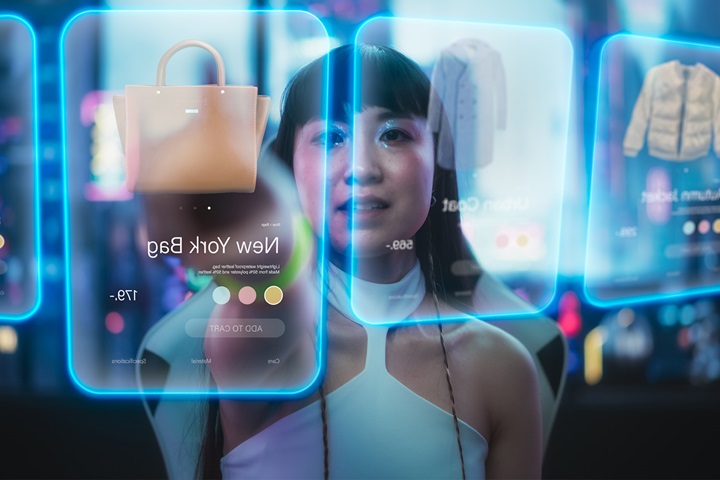What began with simple search queries has accelerated into a world where intelligent agents proactively research options, evaluate prices, and increasingly make purchases without human input. In some categories, AI agents act before shoppers even recognize they have a need.
This is the new frontier of agentic AI commerce. To help leaders navigate this shift, I’ve built a four-level model of agentic AI shopping. It maps the rapid rise of autonomous shopping and offers retailers and brands a strategic blueprint to remain visible, valuable, and, ultimately, chosen in a future where attention is outsourced and automation drives shopping action.
Four levels of agentic AI shopping

Level 1: Discovery and research
At this stage, shoppers lean on GenAI platforms to explore ideas like birthday gifts, best workout gear, and what’s new in skin care. This is where search meets brainstorming.
Benefit: This is a low-friction, high-curiosity space where shoppers aren’t ready to buy, but are open to influence.
Risk: Misinformation or generic suggestions may replace brand-led storytelling. Brands must guide agents with clean, compelling content.
AI platforms: ChatGPT, Gemini
Level 2: Intelligent find and compare
Here, the AI steps up to offer curated results with product specs, reviews, pricing, and retailer availability. It's a smarter search bar with context-aware answers.
Benefit: Shoppers gain clarity and confidence in what is available and worth buying.
Risk: Brands that lack structured product data or API accessibility may simply not show up.
AI platforms: ChatGPT, Perplexity
Level 3: Seamless buy and execute
Agents now go beyond suggestions to actually make purchases. With the agent having digital wallet access, shipping preferences, and merchant links, the purchase is completed inside the agent experience.
Benefit: Fewer steps. Shoppers do not bounce among websites, tabs, or forms.
Risk: Retailers lose direct traffic and face new competition from AI-native interfaces like Amazon “Buy for Me” and AI-enabled wallets.
AI platforms: Amazon’s “Buy for Me” and Perplexity’s “Buy With Pro”
Level 4: Autonomous agentic commerce
At this final stage, AI agents no longer wait for commands. The agents proactively anticipate a shopper’s personal needs and purchase items based on data patterns, preferences, and context, all without the shopper making a request.
Benefit: Ultra convenient. The shopper barely lifts a finger.
Risk: Loyalty becomes owned by the AI layer, not the brand. Retailers and CPGs risk disintermediation unless they are part of the agent’s “preferred” network.
Platforms: Still emerging. Amazon has hinted at a future “Buy for Me” model through Alexa. Google’s “Help Me Shop” could evolve toward this level of autonomy.
What retailers and CPG brands can do today
- Structure your product data. Ensure all SKUs have clean, complete, and structured metadata so AI agents can access and present them. Brands must move to “metadata marketing.”
- Build AI visibility. Optimize for AI prompt responses, just like SEO, but for ChatGPT. Ask yourself whether an AI agent would suggest your brand first.
- Partner now with agentic commerce tools. Explore integrations with emerging AI shopping platforms and wallets to learn faster and protect access to transactions.
- Create brand relevance earlier. As more purchase decisions shift upstream, understand the content and community that will play a bigger role in becoming part of the shortlist.
There’s no question that agentic commerce is becoming the new front door to the shopper journey. Brands and retailers that align with this shift early will future-proof their brands, shopper engagement, and channel performance.
For a robust assessment of big picture trends and more agile scenario planning that can flex to current and future challenges, check out Kantar’s Business Not As Usual framework.




